The Revolutionary Guards: An Introduction
The Islamic Revolutionary Guard Corps (IRGC) is the Islamic Republic of Iran’s most important institution. The military-security institution commands huge influence in every aspect of Iranian public life, from culture and the environment to the economy, politics and judicial process. Whatever the field or area, the IRGC is not required to report to anybody and is answerable to no one.
The IRGC was created early after the 1979 Islamic Revolution by the order of the founder of the Islamic Republic, Ayatollah Ruhollah Khomeini. Its declared mission was to safeguard the revolution and its accomplishments. As the years have gone by, it has expanded its sphere of activities. The entities under its control have multiplied to such a degree that it now operates effectively as a parallel government. It interferes in all current affairs of the country and it aims to have control over every aspect of the way Iran is run.
In a series of reports, IranWire presents a detailed portrait of this powerful and mysterious institution and, for the first time, identifies and explains all bodies, institutions and other entities operating under the umbrella of the Revolutionary Guards, at the same time outlining its activities through an infographic and an interactive diagram.
The infographic is a visual representation of the Guards’ organizational structure and presents all institutions under the control of IRGC in one map. It resembles a family tree, a portrait of the IRGC with all its children, grandchildren and great-grandchildren — a dramatic picture of power in Iran today.
In the interactive diagram, the viewer is able to use the mouse to see how various entities under the control of the Guards emerged, and how they are connected — exactly like a family tree.
IranWire has aimed for this series and the overall project to be informative and a solid research tool. But it is not perfect, and there will always be room for updates, enhancements and further information. We welcome your views, ideas and knowledge, so please do get in touch via email, Twitter or Facebook.
***
The IRGC Ground Forces- (Nirooy-e Zamini-e Sepah)
The IRGC’s Ground Forces, known as NEZSA, was informally established in February 1983 with the Ground Units of the IRGC (Ghovay-e Zamini-e Sepah). At the time, the IRGC organized its ground troops in the war with Iraq through Khatam-al-Anbia Headquarters and Najaf-e Ashraf Unit.
The 7th Corps of Hadid and the 3rd Corps of Saheb-al-Zaman were subunits of Khatam-al-Anbia Headquarters. The 11th Corps of Qadr and the 5th Corps of Nasr were subunits of Najaf-e Ashraf Unit. In 1983 the IRGC commanders decided to merge these units into the Ground Units of the IRGC.
According to the organizational structure at the time, the Ground Units of the IRGC consisted of a number of corps, each with their own divisions. At the time of operations, those corps acted as the Frontline Headquarters of the Ground Forces (Gharargah-e Moghadam-e Nirooy-e Zamini).
On September 17, 1985, the then Supreme Leader, Ayatollah Ruhollah Khomeini, ordered a new organizational structure for the IRGC. The Supreme Leader wrote a letter to the chief commander of the IRGC, Mohsen Rezaei, and tasked him with the establishment of the IRGC’s “Ground, Navy, and Air Forces.”
Until 1990, the IRGC Ground Forces had a multilayered structure and was in charge of organizing and managing the Basij militia. In that year, Supreme Leader Ayatollah Ali Khamenei, who succeeded Ayatollah Ruhollah Khomeini in 1989, asked for Basij and the IRGC Ground Forces to be separated. This is when the Resistance Force of Basij was established as an organization that was independent from the force.
In 2007, the IRGC Ground Forces Transformation Program (Tarh-e Tahavol-e Nirooy-e Zamini-e Sepah) changed the structure once again. According to the program, the local Basij resistance bases, along with the IRGC Ground Divisions in the Provinces, would form the IRGC Corps in Provinces in 2008.
The IRGC Ground Force is under the control and command of its headquarters (Gharargah) and coordinate its activities through 32 corps in all 31 provinces. Tehran Province has two corps. It also has 11 military headquarters in different parts of Iran. The headquarters act as regional military units and have their own independent structure. They manage and command the corps in different provinces and are supported by the IRGC’s Military Support Unit (Yegan-e Poshtibani-e Razm) and Service Support Unit (Yegan-e Poshtibani-e Khadamat).
The chief commander of the IRGC appoints one of the IRGC corps in different regions as the deputy commander of the headquarters. The Forces of the IRGC has 17 ranks and 10 divisions, including infantry, artillery, armored, mechanized, airborne, and special forces.
The IRGC Ground Forces Commander
Upon recommendation by the chief commander of the IRGC, the Supreme Leader appoints the IRGC Ground Forces commander as the commander in chief of the Armed Forces. Since 1985, the force commanders to date have been: Ali Shamkhani (September 1985-October 1989), Mustafa Izadi (October 1989-July 1992), Mohammad Ali Jafari (July 1992-August 2005), Ahmad Kazemi (August 2005-February 2006), Mohammad-Reza Zahedi (February 2006-March 2010), and Mohammad Pakpur (March 2010-present).
The Supreme Leader’s Representative in the IRGC Ground Forces
The Supreme Leader’s representative in the IRGC appoints the Supreme Leader’s representative in the IRGC Ground Forces. This representative has his own organization and is in charge of all appointments and dismissals in the Public Relations Division and any promotions within the force.
The Divisions (Moavenatha)
The IRGC Ground Forces is under the command of its headquarters, which is run by the Ground Forces Commander. The IRGC Ground Forces has the following divisions: intelligence, training, operations, coordinator, human resources, public relations, and publications, poverty alleviation, and medical.
The IRGC Ground Forces Headquarters
Beside its headquarters in Tehran, the Sar-Allah Headquarters, the IRGC Ground Forces has ten headquarters:
1. Hamze Seyyed-al-Shohada Headquarters, in northwest Iran, controls the western borders with Iraq and Turkey and the provinces of western Azerbaijan, Kurdistan, and Kermanshah. This headquarters may be one of the IRGC’s most important. In 1982, this headquarters played a significant role in suppressing the protests in Kurdistan. The armed struggle with the Kurdish opposition militia is still taking place to this day. In the recent decades, the fiercest and bloodiest battles have taken place in this headquarters’ area of control.
2. Karbala Headquarters in the southwest, controls the provinces of Khuzestan, Lorestan, and Kohgiluyeh and Boyer-Ahmad.The IRGC Ground Forces has 31 headquarters in all 31 provinces of the country. Hazrat Abulfazl Headquarters in the city of Ahvaz is one of the most significant and is under the command of Karbala Headquarters. It focuses on security operations as well as monitoring and suppressing ethnic minority activities in the region.
3. Samen-al-Aeme Headquarters, in the northeast, controls the provinces of Northern Khorasan, Southern Khorasan, and Razavi Khorasan. It was established in 2017 following Khamenei’s order. According to its previous commander, General Ghodrat al-Allah Mansouri (recently killed in an accident), it was established to protect Iran’s eastern border, which neighbors Afghanistan. This was considered necessary because of the weakness of the central government in Afghanistan and to prevent the potential threat posed to Iran following the rise of Islamic State (Daesh) there. According to its late commander, the headquarters has contributed to the development of infrastructure for dealing with impoverished areas and regions in the provinces.
4. Najaf-al-Ashraf Headquarters, in the central region, controls the provinces of Ilam, Hamedan, and Kermanshah. It was responsible for intelligence operations covering the three provinces during the Iran-Iraq War, and according to its commander, General Mohammad Nazar Azimi, had 265 martyrs. Since 2017, along with other headquarters it has organized a number of memorials or “Yadvareh” for its martyrs. As part of its mission, it has organized committees for gathering documents related to the war in the three provinces. In addition, the headquarters has cooperated with the IRGC-affiliated Center for Holy Defense Publication and Documentation, Kermanshah branch, in putting together 14 digital volumes and 22 published volumes on the Iran-Iraq War.
In 2016, Tabnak news agency claimed that the headquarters had eradicated a terrorist group, killing its commander and the rest of its 11 members. Subsequently, in 2018, it was reported that the three members of the base were killed during clashes with a jihadist group affiliated with Daesh (ISIL) bordering Kermanshah. In the aftermath of the 2017 earthquake in Kermanshah, the Tasnim website - affiliated with the IRGC - reported that the base was involved in providing help to earthquake victims using two independent units: the engineering, and the technology, healthcare and drone brigades.
5. Quds Headquarters,in the southeast, controls the provinces of Sistan and Baluchestan, and Kerman.
This headquarters gained more power in 2014 after it was tasked with securing the southeast borders. It is responsible for suppressing armed opposition and terrorist groups in Sistan and Baluchestan Province. The Quds Headquarters works with the southeast headquarters of the Iranian Army Ground Forces to secure the border with Afghanistan and Pakistan. Its other projects, which were planned and executed in order to expand the IRGC’s social influence in the region, include building housing units, hospitals, clinics, and roads. It also runs a very specific scheme called the Security Scheme of Shahid Shooshtari (Tarh-e Amniati-e Shahid Shooshtari), which recruits and trains tribes and residents in the province and organizes them into militia groups that can support the IRGC. Noor Ali Shooshtari was the commander of the Quds Headquarters who was killed in a suicide mission by Jundallah (People’s Resistance Movement of Iran) in 2009. The terrorist attack killed at least 55 local residents and IRGC forces, and injured more than 157 people. In addition to the Quds Headquarters , the Airborne Division and Saberin Unit of the IRGC Ground Forces are on call in the southeast region to join the base with fighter jets and helicopters.
6. Al-Qadir Headquarters, in the north, controls Mazandaran, Golestan, and Gilan. This headquarters dates back to 1985 during the Iran-Iraq War when the provincial forces of Mazandaran, Golestan and Gilan were tasked with intelligence functions under the 25th Karbala Division. Together, these forces formed the Qadir Headquarters under the IRGC Ground Forces’ command. To strengthen the IRGC’s zeal, social influence and spirit of martyrdom, the headquarters organizes a number of memorials or “Yadvareh” each year in memory of those who sacrificed their lives at the front. It also supervises the activities of the IRGC in the three provinces. In more recent years, it has clashed with the so-called counter-revolutionary forces bordering the northern provinces. For example, in 2011, the headquarters reported that it had eradicated two hundred members of the Kurdish opposition party’s armed group, PJak.
7. Medina Monavareh Headquarters, in the south, controls the provinces of Fars, Bushehr, and Hurmozgan. In recent years, this base has been the site of the IRGC’s military maneuvers. For example, in February 2015 its commander, General Hamid Sarkhaili, announced the launch of Prophet Muhammad Exercise Maneuver 9. This covered 3,000 square kilometers from the Mobarak Mountain in the Jask Region through Bandar Lengeh and the Islands of Gheshm, Lark, Hengam and Hormoz. In the words of Sarkhaili, “the maneuver was launched by the IRGC Ground Forces in cooperation with the Medina Monavareh Headquarters which provided 50,000 infantry commandos and armored forces.” He also said that the headquarters is equipped with “hundreds of launchers, anti-tanks, armors and missiles” and that is ready to target potential enemies. It is also reported to have carried out a number of poverty alleviation and job creation projects worth 6.5 billion (Iranian rial) in the city of Sirk. These include the establishment of Haszrat Khadije Seminary, Bandar Koohestak Hosseinye, Routan Village Mosque, Shaid Mardan Hosseiniye and the construction of more than fifty toilets for mosques and Hosseiniyehs across villages and the small city of Sirk
8. Ashura Headquarters in the northwest, controls the provinces of eastern Azerbaijan, Zanjan, and Ardabil It comprises a cyberspace headquarters in eastern Azerbaijan which its director, Mohammad Reza Seifi, said in 2018 was ranked as one of the top headquarters in the cyberspace sphere, and produces games, animation and software. Recently, the Ashura Headquarters announced it was launching a military exercise across eastern Azerbaijan with the participation of jihadi Basij groups. According to the commander of the Ashura Base, these jihadi units were dispatched to provide medical, health and infrastructure services to poor and impoverished areas of the region.
9. Saheb-al-Zaman Headquarters, in the center of the country, controls the provinces of Markazi, Qom, Semnan, and Qazvin. During the Iran-Iraq War, the forces of the three provinces were charged with intelligence operations at the front. Like other provincial headquarters, in order to strengthen social control in the provinces and strengthen its loyal supporters, the headquarters organizes a number of memorials to commemorate the troops from the intelligence units of the three provinces who sacrificed their lives during the Iran-Iraq War. In addition, it organizes various camps to facilitate trips for the families of martyrs to holy cities in Iran, in particular Qom.
10. Hazrat Seyyed-al-Shohada Headquarters in the center of the country, controls the provinces Isfahan and Yazd. As with previous headquarters it was engaged in intelligence operations during the Iran-Iraq War and according to its commander, General Javad Esteki, it had the highest number of martyrs. Esteki has said that, among 450 martyrs of the intelligence operation of Seyyed-al-Shohada Headquarters, 307 were from Esfahan, 90 from the 18 al-Qadir Brigade in Yazd, and 53 martyrs were from the Qamar Bani-Hashem Brigade in the province of Chaharmahal Bakhtiari. According to Esteki, in 2015 the headquarters comprised the 14th Imam Hussein Operational Division, the 8 Najaf Ashraf Division, the 44 Qamar Banihahem Brigade, the Al-Qadir Brigade, the 15 Khordad Missile Group, the 40 Engineering Saheb ol-Zaman Brigade, and military support centers, including Amir- al-Momenin University, Shahid Sadughi Hospital and thirty Basiji battalions.
The Saberin Special Unit
The Saberin Special Unit of the IRGC Ground Forces was established in 2000. Its members are called “takavar” or commandos and in order to join, they need to go through an intense period of training that includes climbing, parachuting, and bodybuilding. The unit ranks its commandos according to three levels: Rapid Response or “Vakonesh-e Sarie”, Special Force or “Nirooy-e Vijeh”, and Special Operations Force or “Nirooy-e Makhsoos.”
During the past decade, the unit has been involved in some military operations along Iran’s western borders with Iraq and Turkey against the armed Kurdistan Worker’s Party (PKK), and along the southeastern border with Pakistan against the terrorist group, Jaish-al-Adl (Army of Justice), which is based in Iran’s Sistan and Baluchestan Province and Pakistan’s Balochistan Province.
The Aviation Unit (Yegan-e Havanirooz)
The Aviation Unit of the IRGC Forces was established in 2015, by order of the Commander in Chief of the Armed Forces, Supreme Leader Ayatollah Ali Khamenei, and is mostly stationed in the Fath Headquarters, located in the city of Karaj in Albor Province. The commander of the unit is appointed by the chief commander of the IRGC, and it is the IRGC’s most important helicopter unit, with “helicopter support” and “offensive operations” stated as its most important tasks. Its three significant subunits are: Advanced Aviation Training Center, Helicopter Research Center, and Helicopter Professional Repair Center.
Another subunit of the Aviation Unit is the Seyyed-al-Shohada Aviation Base, which was established in July 2017 in Shiraz. Its area of operation is within the provinces of Fars, Hurmozgan, Khuzestan, Sistan and Baluchestan, Kerman, Bushehr, and Kohgiluye and Boyer-Ahmad. In recent years, the unit and its subunits have owned and operated all the IRGC helicopters, and its power and influence have expanded.
The Drone Center (Markaz-e Pahpadi)
The Drone Center of the IRGC Ground Forces was established in 2016. The reasons for the establishment of the center are stated as: “the efficient use of drones in operations, heliborne operations, enemy reconnaissance, and assault operations.”
The Self-Sufficiency Jihad Research Organization (Sazman-e Tahghighat va Jahad-e Khod Kafaee)
The Self-Sufficiency Jihad Research Organization of the IRGC Ground Forces is a military research institution that develops and manufactures armaments. It was established in 1993 and has always been associated with the IRGC’s Imam Hussein University in terms of research and design. Its products include weapons, missiles, armored vehicles, radio communication equipment as well as equipment to be used in cyber warfare.
Hazrat Amir-al-Momenin University (Mojtamae Daneshgahi-e Hazrat Amir-al-Momenin)
Hazrat Amir-al-Momenin University is based in Isfahan. Its mission statement includes: “organizing the required training for the IRGC Ground Forces,” and “training loyal and ready-to-fight warriors.” During the Iran-Iraq War, the university played an important role in ideological indoctrination and military training of the Basij volunteers and the IRGC cadres. According to its commander, General Mohammad Karami, more than 70 percent of war martyrs from Esfahan and Chaharmahal Bakhtiari Provinces were trainees of the university. The courses at the university include, general studies, artillery, defensive strategies, telecommunications and special forces training. In addition to military studies, the university offers ideological, educational and political teachings.
The Poverty Alleviation Headquarters (Ghrargah-e Mahroomiat Zodaee)
During the past decade, the IRGC has established various headquarters across the country with the aim of alleviating poverty. The wide variety of projects undertaken by these headquarters includes construction and development in the various regions. These activities have turned these headquarters into powerful economic institutions in different regions across the country.
In addition, the IRGC Ground Forces has created various poverty alleviation headquarters. Among these are Shahid Mir-Husseini and Samen al-Aeme II Headquarters.
Shahid Mir-Husseini Headquarters in the Sistan and Baluchestan Province (named after the IRGC commander Mir Qassem Mir-Husseini who died in the Iran-Iraq War in 1986).
Samen-al-Aeme II Headquarters in Southern Khorasan (named after Reza, the 8th Imam of Shias)..Samen-al-Aeme Base 2 was formed in April 2017 with the goal of protecting four cities within the border of Southern Khorasan. These cities are Nahbandan, Zirkuh, Sarbisheh and Ghayn. The two headquarters carry out development projects in villages across those provinces. The activities include food distribution, providing wedding loans, building small workshops, and other projects in agriculture, construction, infrastructure.
The Military Medical Center (Markaz-e Behdari-e Razmi)
The Military Medical Center of the IRGC Ground Forces is controlled by the IRGC Medical Division. The center specializes in installing portable hospitals, providing medical care for all the IRGC Ground Forces units, sending medical teams on camps, road-trips, and military exercises. Over the past decade, and in cooperation with the Ministry of Health and Medical Education, the center has been involved in building hospitals and medical centers, which turned the center into a profit-making business for the IRGC. The center also supports the Poverty Alleviation Headquarters of the IRGC Ground Forces with its medical needs. Currently, the center owns and operates 13 portable hospitals around the country.
The Military Engineering and Logistics Center (Mohandesi-e Razmi va Poshtibani)
This center is controlled by the War Division (Moavenat-e Razmi) of the IRGC Ground Forces and has dozens of engineering battalions of its own. One of its most important tasks is “blocking the borders,” which is achieved through establishing temporary or permanent bases.
The Service Organizations (Nahadhay-e Khadamati)
These cooperative and commercial organizations are mainly involved in housing projects. One of the most important projects, currently being undertaken in Tehran, is the building of 700 housing units as the starting point of a huge IRGC housing project called “Shahid Kharazi.” The housing project is named after Commander Hussein Kharazi who was killed in the Iran-Iraq War in 1986.
Another important service organization is the Employees’ Welfare Services (Markaz-e Khadamat-e Refahi-e Karkonan), which provides members of the IRGC Ground Forces with food, groceries, and day-to-day items.
The Commander in Chief of the Armed Forces
The Chief Commander of the IRGC
The Supreme Leader’s Representative in the IRGC
The IRGC Security and Intelligence Agencies
The IRGC's Social, Cultural, Scientific and Educational Institutions
The IRGC Commercial and Financial Institutions-(Khatam-al-Anbiya Construction Headquarters)
The IRGC Commercial and Financial Institutions-(Bonyad-e Ta’avon-e Sepah)
The Organization for the Mobilization of the Oppressed
The Basij Cooperative Foundation
Cyberspace Institutions and The Physical Training Organization of the Basij
Basij Headquarters and Military Organizations
Basij Social and Cultural Organizations
visit the accountability section
In this section of Iran Wire, you can contact the officials and launch your campaign for various problems




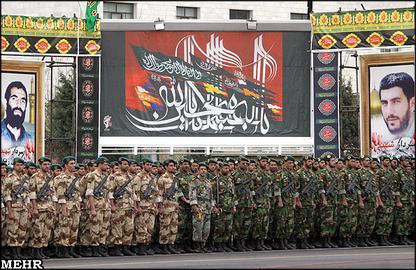
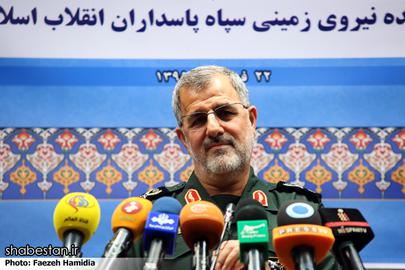
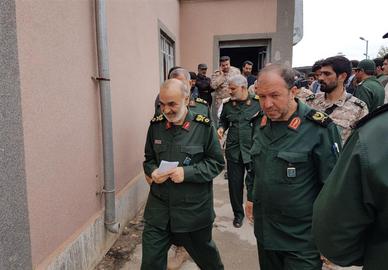
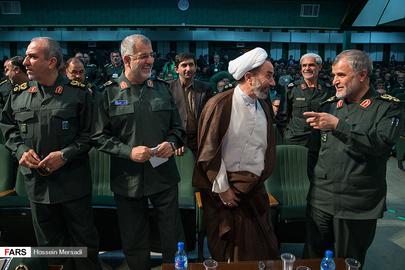
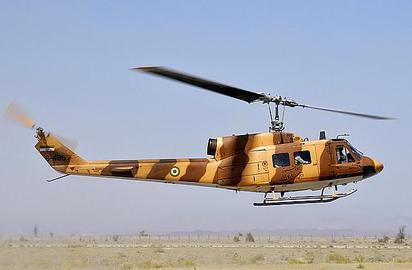




















comments